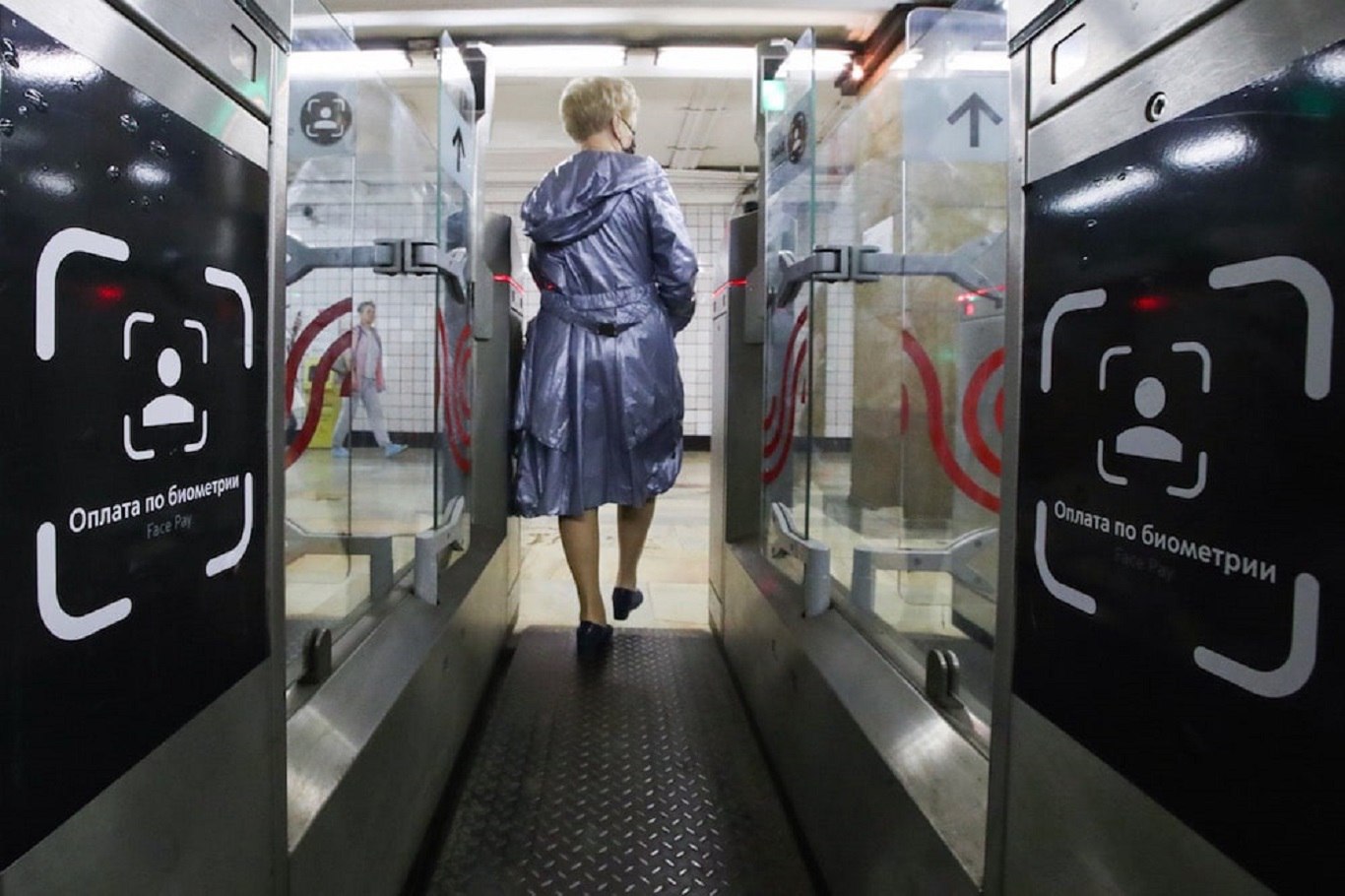Face Pay, a public transportation payment system that relies on biometric facial recognition allows people in Moscow to use the subway without cash. As the Russian newspaper Vedimosti reports, more than 170,000 users are currently registered on the Face Pay system, owned by the Moskow government. Since the service’s launch, more than 26 million trips have been made using biometrics.
Moscow is the first city in the world where facial recognition works for fare payment on a large scale. It was introduced last year by order of Moscow Mayor Sergei Sobyanin. The service is available at all 250 metro stations and the MCC’s Kutuzovskaya station.
Read also: Check out our coverage on curated alternative narratives
Users named the main advantages of the system. Convenience – no need to carry an ID card (44%). Modernity – an innovative way to pay (42%). Time-saving – no queuing in front of the ticket counter or ticket machine (38%). Speed – entering with your face is faster than going to the turnstile and pulling the ticket (37%).

However, privacy concerns are ignored and downplayed. Another step toward total surveillance, say critics and are not wrong in expressing their concern. But for now, the use of the biometric system is voluntary.
In a puff piece, Moscow’s deputy mayor in the city’s transport government, Maxim Liksutov, is trying to highlight the benefits for people and appease critics on privacy issues.
“Biometric payment is a reliable and convenient alternative to Apple Pay and Google Pay,” Liksutov said. “In the world, biometric technologies are becoming more and more widespread.
Facial recognition algorithms are being implemented, for example, to obtain services from tax authorities or have your identity verified by traffic police, so you don’t have to carry a driver’s license. If we lacked confidence in our service’s security and reliability, we would never implement it.”
To activate Face Pay, passengers must link their photo, bank card, and transit card, known as a “Troika” card, to the Moscow Metro mobile app service.
Liksutov said passengers’ data would be “securely encrypted,” but activists have raised privacy concerns. “The camera at the turnstile reads a biometric key, not a facial image or other personal data,” the politician said in this regard.
Face Pay will also be expanded to other modes of transportation. In September, biometric payment will be accepted at all stations on Moscow’s Central Ring. Also, this year, Face Pay will be available to passengers on regular river routes – an utterly new turnstile design has been developed for this type of transport. Testing of the service on land transportation continues.
RUSSIA IS AHEAD OF CHINA AND JAPAN
A fare payment system using facial recognition is also being rolled out in China, but Russia is ahead of the curve. In Harbin, biometric fare payment has only been in operation in some subway stations since July 2020. And in Shenzhen, there will be 18 stations on the same line from 2019.
Face Pay has been introduced in Zhengzhou, China, and it works in all 64 stations in Fuzhou. The Japanese city of Osaka began testing biometric payments in December 2019 and plans to roll them out across the entire subway system as late as 2024, ahead of Expo 2025.
Starting in September 2020. Face Pay will be tested on local unmanned buses.

SURVEILLANCE STATE
Authorities in the Russian capital have already deployed facial recognition technology extensively across the capital, using a network of nearly 200,000 surveillance cameras to identify criminal suspects, the opposition Moscow Times newspaper has previously reported.
Freedom activists have expressed fears that authorities will use facial recognition cameras as a surveillance tool once they are installed nationwide.
Experience around the world shows that these fears are well-founded. In fact, it is almost always the case that control mechanisms are introduced under the pretext of security, convenience, or the like before the state then uses the infrastructure for surveillance and repression.
Given that, according to Russian business newspaper Kommersant, photos uploaded to a public services website of Moscow residents, for example, are automatically available to law enforcement agencies, fears are being raised that this will also be the case with this app.
The total surveillance state is being pushed further and further around the world. Whether in communist-totalitarian China, supposedly liberal-democratic Great Britain, or Putin’s Russia.

